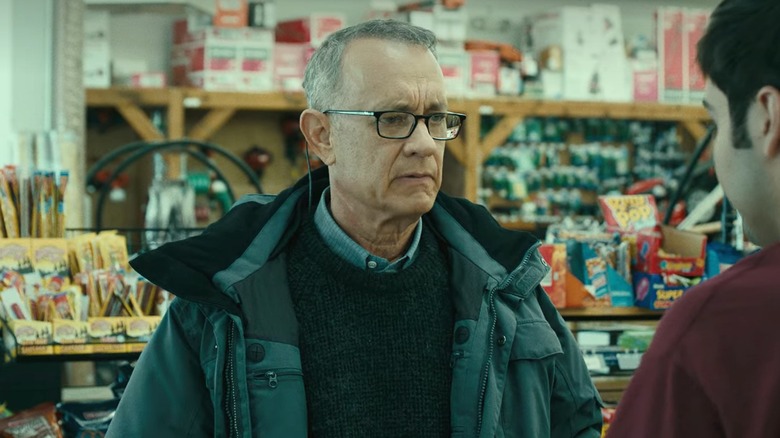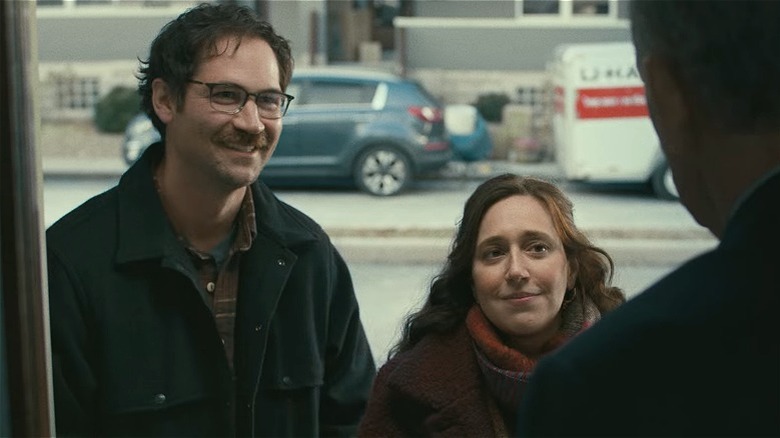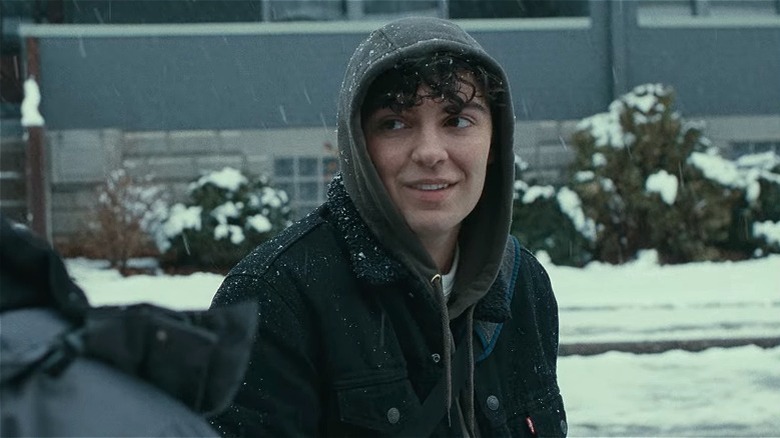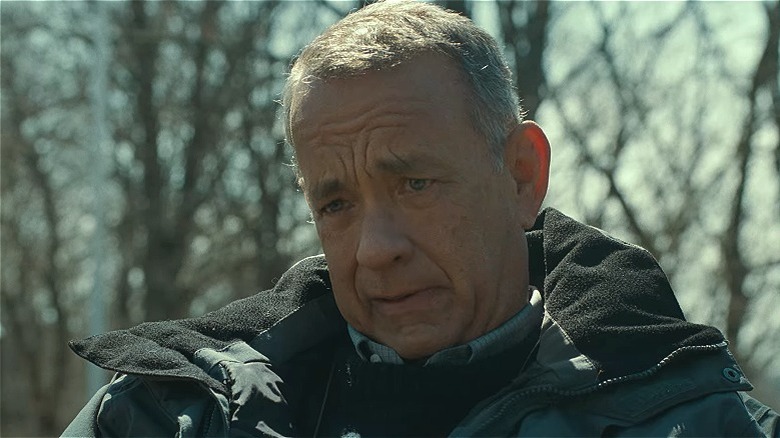A Man Called Otto: How The U.S. Adaptation Differs From A Man Called Ove
Adaptations often provide several changes from the source material, which becomes even more apparent when there are multiple iterations of the same property. The recent Netflix offering of "A Man Called Otto" sees a surly man named Otto (Tom Hanks) struggle with mental health issues and despair, but this movie is actually an adaptation of the 2015 Swedish film "A Man Called Ove," which is actually inspired by Fredrik Backman's 2012 novel of the same name. Besides a simple name change that resulted from English localization, there are other changes that exist between the Swedish film and the Hanks-led version.
First and foremost, for those that have seen both "A Man Called Otto" and "A Man Called Ove," the very first scene should seem very familiar, though there is a fairly significant difference that tends to color the rest of these films. Both movies see the main character at a store, and both versions see this main character get into a fight with the workers over the minutia of the transaction, which was actually inspired by a real-life story. However, the major difference in this opening scene is that the Hanks iteration sees Otto attempting to buy a rope to hang himself and arguing over the specific length of the item, while the Swedish film sees Ove (Rolf Lassgård) instead buying flowers. This makes for a fairly major difference in tone, and that seems to continue throughout "A Man Called Otto."
The nationality of the main character's neighbors has changed
Besides this aforementioned scene, there are characters in "A Man Called Otto" that have also been superficially altered from the original source material, though more often than not, even these changed characters still occupy similar story beats. A major component of both films is that Otto/Ove soon meets brand new neighbors that deeply affect him, and they are portrayed as a family of immigrants. In "A Man Called Ove," the family consists of Iranians and is led by the family matriarch Parvaneh (Bahar Pars). However, in "A Man Called Otto," Parvaneh is actually Marisol (Mariana Treviño), and the family is Mexican instead of Iranian. However, both Parvaneh and Marisol are both friends to Otto and Ove, and both are able to handle his typical unpleasant demeanor with a smile.
In other words, this is another superficial change that seems at face value to be a major departure from the source material, but in fact, the essence of Otto and Ove's neighbor remains the same regardless of their nationality or the film they appear in. Both help the titular character feel alive and hopeful again, and both are essential to the end of these movies.
Two characters become one in A Man Called Otto
In addition to the shift in the neighbors' nationality, one character is present in "A Man Called Otto," but not in "A Man Called Ove." This character in "Otto" is actually an amalgamation of two different characters in "Ove," but much like the changed neighbors, this character still allows "Otto" to hit the same plot points as its Swedish predecessor. In "A Man Called Otto," Malcolm (Mack Bayda) eventually gets Otto to help them with a bicycle repair, and because Malcolm is transgendered, he eventually gets into a fight with his parents. This results in Malcolm staying with Otto, and the two slowly bond.
In "A Man Called Ove," there is no Malcolm, and in their stead, Adrian (Simon Edenroth) and Mirsad (Poyan Karimi) take their place. Both of these characters contain a component of Malcolm's story in "A Man Called Otto," with Adrian's story being about the bicycle, and Mirsad representing an LGBTQ individual who gets tossed out of his house and ends up staying with the titular character. However, by combining the two characters as Malcolm, "A Man Called Otto" is able to spend more time focusing on a single interpersonal dynamic.
Flashbacks have different uses in A Man Called Otto and A Man Called Ove
Another difference between "A Man Called Otto" and "A Man Called Ove" involves the history of the main character and how each movie uses flashbacks. In "A Man Called Ove," Ove meets the love of his life during a fateful train ride where it is revealed that Ove is homeless and he has sneaked on board. Meanwhile, in "A Man Called Otto," Otto meets his future wife Sonya (Rachel Keller) after picking up a book that she drops. But much like "A Man Called Ove," this scene is set in a backdrop of a train station, which may be an homage to the Swedish film.
Besides the changed origin story of Otto and Ove and their respective love, flashbacks are an interesting technique that both films use. However, there is some nuance in how these movies utilize such scenes. In "A Man Called Ove," the flashbacks typically occur when Ove is about to die by suicide, and they are meant to convey the sensation of one's life flashing before one's eyes. These scenes feature different snippets of Ove's life, but in "A Man Called Otto," these flashbacks focus on the relationship between Otto and Sonya. In other words, flashbacks paint a picture of Ove's life while highlighting Otto's love in a much more focused manner.
At the end of the day, "The Man Called Otto" and "The Man Called Ove" channel much of the same story and generally reach the same conclusion, though the path taken there diverges at points for these two films.
If you or anyone you know is having suicidal thoughts, please call the National Suicide Prevention Lifeline by dialing 988 or by calling 1-800-273-TALK (8255).



